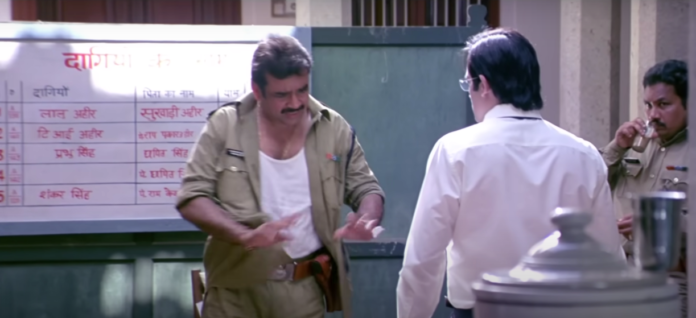This is to write further on the saying of Chinua Achebe that whenever the history of hunts is written by hunters, it will glorify hunting. This backdrop of understanding is largely reflected by the cultural apparatus of Hindi cinema, which remained dominated by the social elites of Indian society regarding caste hierarchy. Even if we look at the very nature of Indian cinema since its inception, it has proliferated the worldview of the Savarans. The fact is that these Savarans were overwhelming in the cinema, and their presence, of course, would have an understanding that their worldview was true. But, apart from their worldview, they have created not only a system of cultural subjugation in terms of arts and cultural practices but also they have made sure that their society and milieu will become the discussion of cinema, excluding the majority of Indians (SC/STs, OBCs and Bahujans) in terms of caste and social order.
Here, locating some of the celebrated movies of Hindi cinema in terms of viewing the cinema as an object of cultural proliferation shows us cinema following Manuwadi terms. These movies subtly showcased the socio-political happening in Bihar in terms of caste. Clearly, the views and articulation of the Savarans reflected in the cinema in a manner which culminated in an understanding to the viewers that ‘Oh! This is the reality’, Yes! It’s true! Chara Chor Hai, Ahir Kahin Ka, Jel Me Daalo Isko. that the Bahujan politicians can create a failed apparatus where the question of law and order, education and peace remain insignificant as they are uncivilised to govern.
Hindi Cinema and the Subtle Nature of ‘Savarna’ Worldview
Aakrosh (dir. Priyadarshan, 2010) has been celebrated by and large as a popular Hindi cinema which portrayed the caste structure, dominance and nature of exploitation in terms of socio-political ‘Gathjod’ with the law machinery. The movie starts with the region of Bihar and locates the caste hierarchy deeply engrained in Bihar’s society.
The film progresses and reveals a new scenario in which the local leader of Bihar is responsible for the disappearance and death of several students with the help of law machinery. It specifically discusses the landed Savarans militias of the late 1990s and early 2000s in loose terms and tried to negotiate with the caste violence and massacres in Bihar.
It is interesting to know that this was when an OBC party ruled in Bihar. Lalu Prasad Yadav and Rabri Devi were the chief ministers of Bihar, and the media has largely portrayed Bihar as a state which has failed itself in terms of Law and Order, and Kidnapping, Booth Capturing, and Murders were the daily habits of the state. Lalu Prasad Yadav was also portrayed as a criminal because of his caste location. The movie set itself in this regard and culminated by that the state has no law-and-order process and the very nature of the central government agencies have safe and clear trial methods and processes. Here, it subtly created that the state machinery totally failed in giving justice to the graved.
How Hindi Cinema treated OBCs: Uncivilised, Criminals and Corrupts
Many movies of this period have created an account of Bihar’s politics and society. Movies like Gangajal and Shool viewed Bihar society as a failed state due to its caste politics, failure of law and order and rural mentality of the politicians. Both of the movies have a bearing of Upper Caste male protagonists possessing emancipatory capabilities, Ajay Devgn (Amit Kumar) in Gangajal (dir. Prakash Jha, 2003) and Manoj Bajpayee (Samar Pratap Singh) in Shool (dir. Eeshwar Niwas, 1999). Both protagonists have remained possessed with paternalism and are largely viewed as casteless in character. Intrtingsly, the criminals of the movie name are as follows: Bachhu Yadav (Shool) and Sadhu Yadav and his son Sundar Yadav (Gangajal).
Similarly, OBCs have been depicted in Aakrosh (dir. Priyadarshan, 2010) as criminals with anti-national and corrupt tendencies. In a scene in the movie, the name of the Chief Minister of Bihar has a bearing, like Lalu Ahir on the criminal list at the top of the board (See the दागियों [Criminals] list in the picture) This naming of the criminal name can subtly convey to the viewers that even the chief minister is a criminal in the state. Knowing that Ahir is sometimes used as a euphemism for the Yadav community from Savarnas. Although the scene is a slight and fast frame, it subtly encompasses the viewer’s psyche. Here, the movie has turned the cultural psychology of the viewers against the idea of social justice political figures. It was the period when the media was lamenting the failure of democracy in these states, and movies like these pushed the very notion of caste hierarchy in terms of rule and order.

The author is a Jawaharlal Nehru University’s Centre for Historical Studies doctoral student. His studies centre on the representation of caste in film, the geography of visual culture, and the construction of Dalit identity.


